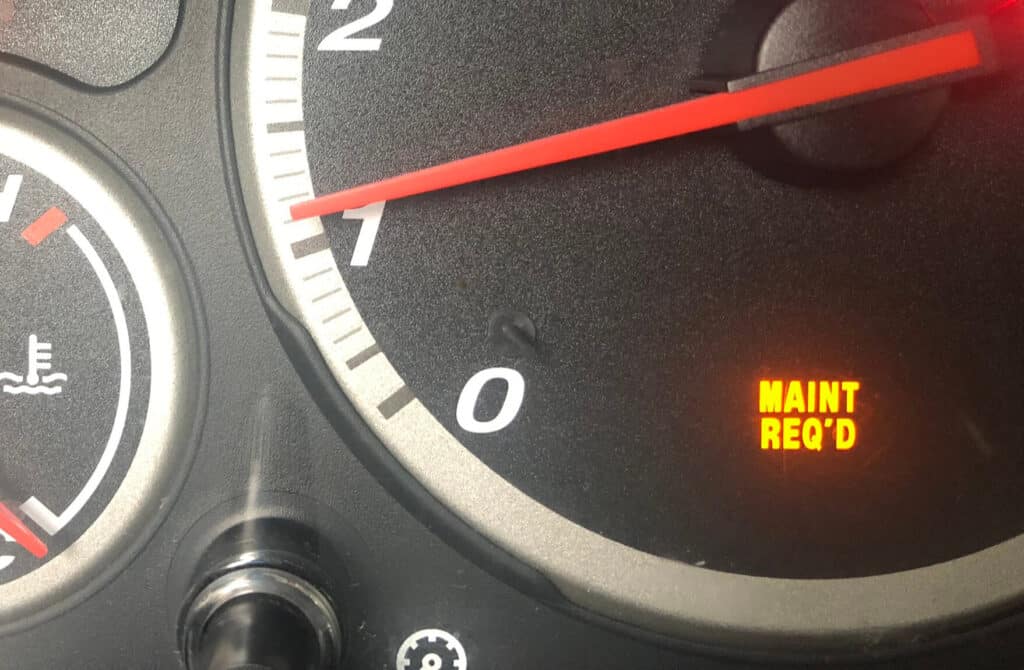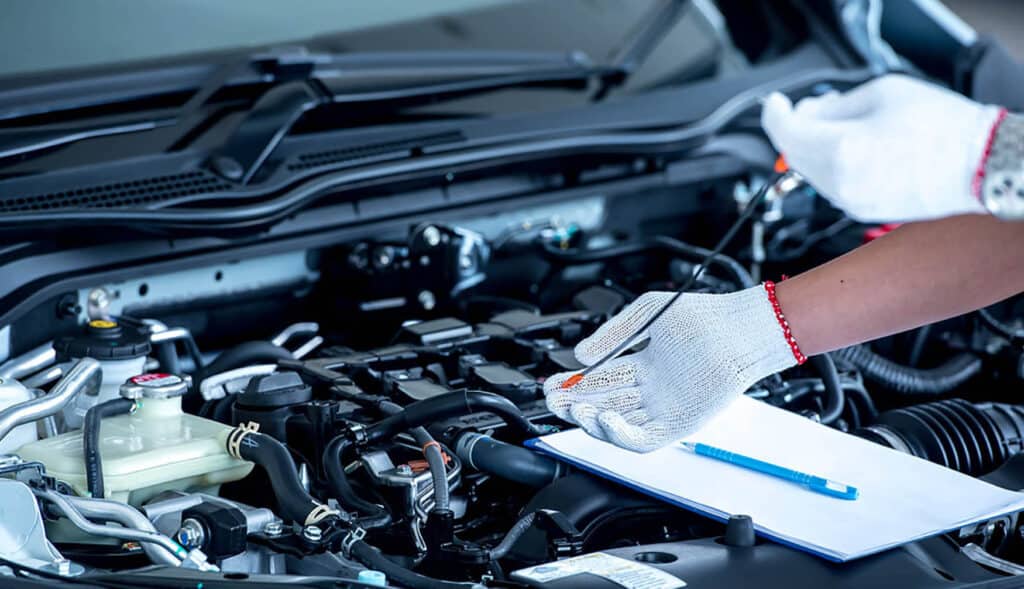Navigating the Nitty-Gritty – The Essence of Vehicle Maintenance
Car ownership is not just about driving from point A to B, but about ensuring your ride remains smooth and efficient for years. The longevity and performance of a vehicle significantly correlate with regular upkeep. Enter the maintenance required light, a car’s built-in alarm that nudges owners, emphasizing the need for timely checkups.
Reading the Signs: Decoding the Maintenance Required Light
• Timely Reminder: Much like how we set reminders on our phones for important tasks, the maintenance required light acts as your vehicle’s in-built alarm. It’s calibrated to illuminate based on specific intervals, often related to mileage or time since the last service.
• Not a Panic Button: Despite its alarming presence, this light doesn’t necessarily indicate immediate danger. Instead, it’s your car’s way of asking for some TLC (Tender Loving Care). Think of it as a gentle nudge rather than a dire warning.
• Proactive Approach: Addressing this alert promptly can prevent small issues from snowballing into significant problems. Regular checkups, in response to this light, can prolong the life of your vehicle and ensure a smoother ride.

On the Move: Is it Safe to Drive with the Maintenance Light On?
When that small, unassuming maintenance light pops up on your dashboard, it’s your car’s polite way of telling you it needs a bit of care. Unlike the dire warnings of a check engine light or a temperature gauge in the red, the maintenance light is more of a gentle nudge than a loud scream. It suggests that while everything isn’t falling apart, there’s a component (or components) that would benefit from a professional once-over.
That being said, if the light illuminates while you’re out and about, there’s no need to pull over immediately and call for help. You can continue your journey, especially if you’re just making short trips around town. However, making a mental or physical note to schedule a service soon is essential. Ignoring this sign for prolonged periods can lead to reduced performance or, worse, a more significant issue that could’ve been nipped in the bud with timely intervention.
Beyond the Basics: Dissecting the Maintenance Light vs. Oil Change Dilemma
For many drivers, the immediate assumption when the maintenance light comes on is that it’s time for an oil change. And it’s easy to see why – oil is the lifeblood of any vehicle, ensuring smooth operation, reducing friction, and keeping everything cool. Regular oil changes are indeed a pillar of good car maintenance.
However, our vehicles are intricate machines with myriad parts working seamlessly in tandem. The maintenance light serves a broader purpose. It’s a herald of the overall health of the vehicle. Beyond oil, this alert could pertain to aspects like the brake system, transmission fluid, air filters, and more. It’s a call to inspect the vehicle holistically, ensuring every component is in optimal condition, contributing to the vehicle’s harmony and extending its lifespan.
Distinguishing the Signals: Maintenance Required vs. Check Engine
Automobile dashboards, in their myriad of lights and symbols, can sometimes feel like a perplexing Morse code. Among these, the maintenance required light and the check engine light are particularly significant. Two lights, two different messages. While the maintenance required light is more of a timely reminder for scheduled service, the check engine light is the car’s cry for help, indicating potential issues in the system. The former is your car’s gentle nudge, a way of saying, “Hey, it might be time for that scheduled checkup.” It’s a preset reminder, often based on mileage, ensuring that the vehicle gets its periodic health check, much like our routine doctor visits. It’s crucial to differentiate between the two to ensure appropriate action.
On the other hand, the check engine light is more urgent, demanding immediate attention. It’s akin to a fever in the human body – an unmistakable sign that something is amiss. This could range from minor issues like a loose gas cap to more pressing concerns such as malfunctioning oxygen sensors or issues with the ignition coil. While both lights signal the need for attention, their severity differs vastly. Recognizing the difference ensures the car gets the right care at the right time, ensuring safety and optimal performance on the road.
Under the Hood: Key Components that Demand Regular Maintenance
It’s not just about what fuels the car but what fine-tunes it. These parts, like the organs in a body, need regular checkups to ensure the entire system’s optimal performance:
• Air Filters: Acting as the car’s lungs, they ensure the engine receives clean air, free of contaminants. A clogged filter can diminish performance and fuel efficiency.
• Brake Pads: Essential for safety, these wear out with use. Regular checks ensure they function optimally, preventing potential accidents and more significant damages.
• Transmission Fluids: This lubricates the moving parts of the transmission, ensuring smooth gear shifts and preventing wear and tear. Over time, it may degrade or deplete and needs replenishment.
• Spark Plugs: These little components play a big role in igniting the fuel-air mixture in the engine. Old or faulty spark plugs can lead to inefficient combustion, affecting performance.
Clocking in Checkups: Frequency of Maintenance for Optimal Performance
Much like how we, as humans, benefit from regular doctor visits even when we’re feeling fit as a fiddle, vehicles too thrive on routine checks. These aren’t merely to fix existing problems but to anticipate potential ones, ensuring that your car remains in peak condition. Manufacturer recommendations, usually detailed in your vehicle’s manual, provide a solid framework to begin with. These suggestions are formulated based on standard testing conditions and offer intervals for various maintenance tasks.

However, the rubber meets the road under diverse conditions. Factors such as frequent short trips, driving in extreme temperatures, or regularly navigating rough terrains can necessitate more frequent check-ins. As a ballpark figure for those seeking a general guideline, consider taking your vehicle for maintenance every 3,000 to 7,000 km. Still, always factor in your specific model’s recommendations and your unique driving patterns. A proactive approach, tailored to your car and driving habits, ensures that your vehicle remains not just operational but optimally so.
Cost Compass: Estimating Expenditures on Maintenance-Related Repairs
Staying informed can save both your car and your wallet. A routine check-up is often less costly than a major overhaul due to neglect:
• Prevention Over Cure: Addressing minor issues during routine check-ups usually translates to smaller bills. Letting them escalate can result in cost-intensive repairs down the road.
• Variable Costs: The expenditure can vary based on the specific component in question. For instance, replacing air filters might be relatively inexpensive, while more significant tasks like addressing transmission issues can carry a hefty price tag.
• Staying Informed: It’s beneficial to have a ballpark estimate of potential costs. Whether you’re setting aside a maintenance budget or deciding if a repair is immediately feasible, this knowledge is power.
• Long-Term Savings: Regular maintenance might seem like a recurring expense, but in the grand scheme, it can result in significant savings. By preventing major breakdowns and prolonging the vehicle’s life, these periodic expenditures prove their worth.
Steering Clear of Hiccups – The Road to a Well-Maintained Vehicle
In the grand tapestry of car ownership, heeding the maintenance required light is a thread that weaves safety, efficiency, and longevity. Timely maintenance doesn’t just ensure a smoother drive but promises safer roads for all. For those in Canada, consider Uchanics mobile mechanic services as a trustworthy partner on this journey, ensuring every drive feels like the first. Keep your vehicle well-tuned, and continue to relish each ride with unparalleled peace of mind.
